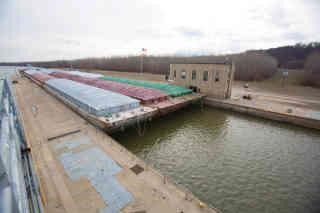In the waning days of his harvest, Deuel County, South Dakota farmer Todd Hanten reported soybean yields to be below average, while corn yields actually beat his farm average. That’s against a backdrop of severe drought having stunted crops throughout South Dakota’s 2022 growing season, which makes a viable market even more important. Hanten, a South Dakota Soybean Checkoff director, is encouraged about global soybean demand. “There is a need for protein throughout the world from human consumption to animal consumption,” said Hanten, one morning before getting back in the combine cab, “and there’s a lot of countries that are [importing] our beans to crush themselves and use the oil for human consumption and use the soybean meal growing their own animals in their countries. That is all good because across the world people are eating better, economies [are] improved, so there is good demand.”

“That is the key reason they are wanting our soybeans and soybean meal is the sustainable practices that we use here in the U.S. versus the South American soybeans where they’re clearing rain forests to increase acres,” said Hanten, who is also a director on the nationwide United Soybean Board, and a veteran of soybean trade missions to various points on the globe. “Also, the reliability of our U.S. soybeans and soybean meal, with all the world’s trouble out there, [international customers] come to realize how the U.S. is a much more stable market that they can depend on and know that we will have a supply for them.”
Hanten is particularly enthused about the South Dakota Soybean Checkoff’s $175 thousand investment in infrastructure improvements to rail transportation links to Pacific Northwest ports. With other states’ contributions as well as from the United Soybean Board and the Soy Transportation Coalition, a total of $1.3 million in checkoff funds are going to transportation infrastructure improvements. Add to that a recently announced $25.5 million federal grant for The Port of Grays Harbor Terminal 4 Expansion and Redevelopment Project, which will serve AGP’s expansion of its soybean meal export capacity. Those improvements allow South Dakota access to some of the state’s largest trading partners, particularly important with the current growing soybean meal availability, a by-product of increased soybean oil demand and production.

Hanten says nothing gets him more excited than Soybean Checkoff investments that improve the export abilities of Upper Midwest farmers. “Exports are one of our biggest and key areas that we need to work on with soybeans and soybean meal and by doing what we’re doing, it’s going to add some higher export capacity, which will benefit all our farmers in South Dakota and across the U.S. The location of Grays Harbor is especially important to South Dakota farmers,” he said. “The expansion is another step towards building markets for that growing soybean meal that we’re going to have available.”
Click here to see more...